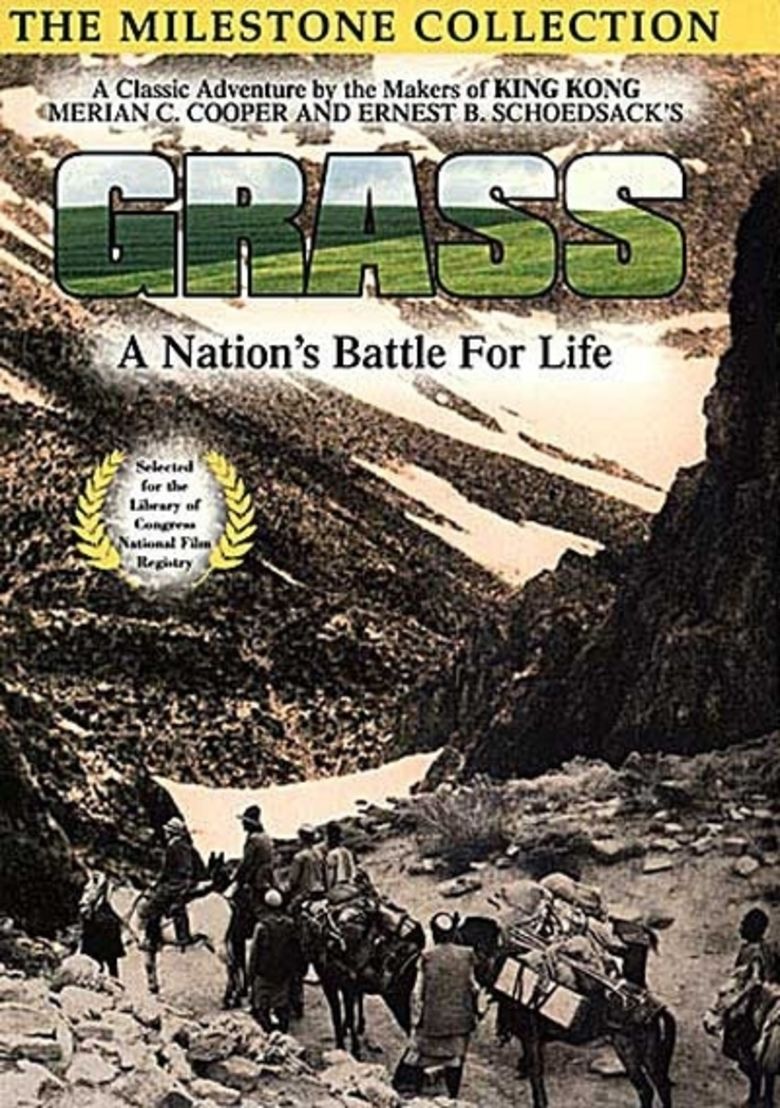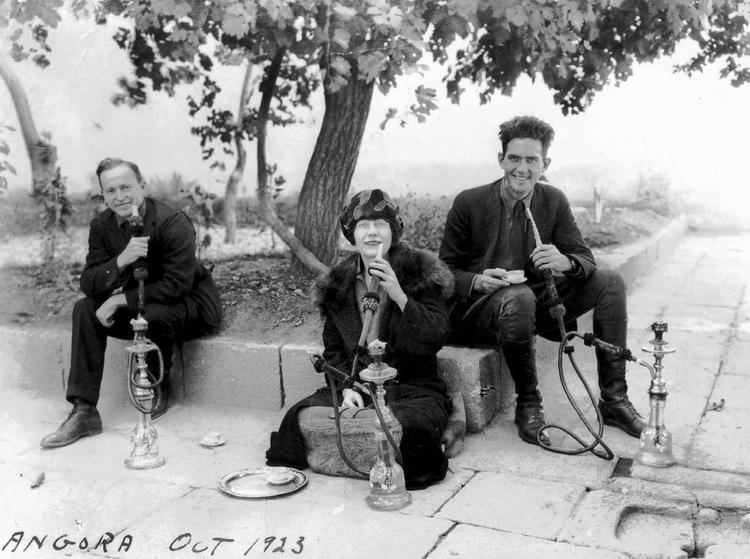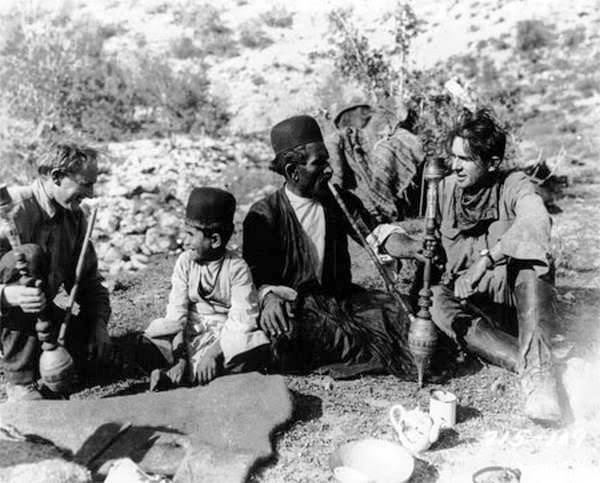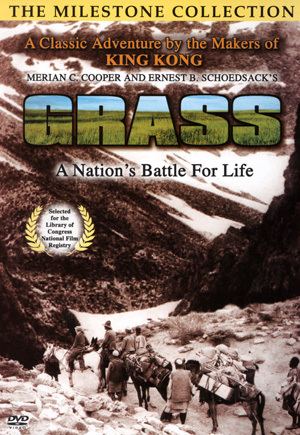Grass (1925 film)
8.2 /10 1 Votes
6.8/10 Letterboxd Initial DVD release March 28, 2000 Country United States | 7.9/10 IMDb 100% Rotten Tomatoes Genre Documentary Duration | |||||||||||||||||||||||||||||||||
 | ||||||||||||||||||||||||||||||||||
Language Silent filmEnglish intertitles Director Merian C. CooperErnest B. Schoedsack Release date March 20, 1925 (1925-03-20) Initial release March 20, 1925 (New York City) Cast Merian C. Cooper (Himself), Ernest B. Schoedsack (Himself), (Herself), (Himself)Similar movies People of the Wind (1976) | ||||||||||||||||||||||||||||||||||
Grass a nation s battle for life 1925 bakhtiari tribe of persia 31450 hd
Grass: A Nation's Battle for Life (1925) is a documentary film which follows a branch of the Bakhtiari tribe of Lurs in Persia as they and their herds make their seasonal journey to better pastures. It is considered one of the earliest ethnographic documentary films.
Contents
- Grass a nation s battle for life 1925 bakhtiari tribe of persia 31450 hd
- Grass a nation battle for life aff 2013
- Production
- Summary
- Reception
- Planned Remake
- Reissue
- References

Grass a nation battle for life aff 2013
Production

The film was made by Merian C. Cooper, Ernest Schoedsack, and Marguerite Harrison, with intertitles by Richard Carver and Terry Ramsaye. It documents the Bakhtiari journey from Angora (modern-day Ankara, Turkey) to the Bakhtiari lands, of what was Persia, in what is now the western part Iran of Chaharmahal and Bakhtiari Province and the eastern part of Khuzestan. They then follow Haidar Khan as he leads 50,000 of his people and countless animals on a harrowing trek across the Karun River and over Zard Kuh, the highest peak in the Zagros Mountains. It was the first film made by the team of Cooper and Schoedsack, who went on make King Kong (1933) and many other films. Cooper was a writer doing research for the American Geographical Society. Schoedsack was a cameraman. Funding was provided by a loan of $5000 by Cooper's father and brother. Another $5000 was provided by Marguerite Harrison. In filming the journey, Cooper, Schoedsack, and Harrison became the first Westerners to make the migration with the Bakhtiari.
Summary

The central concern in the making of Grass was to document a way of life that was unknown to all those outside its realm. The film highlights the extreme hardships faced by nomadic peoples, as well as the bravery and ingenuity of the Bakhtiari on their migration in search of grass (= good seasonal pasture) for their animals. The only earlier ethnographic documentary was Robert Flaherty's Nanook of the North released in 1922. According to Cooper, however, the filmmakers were unaware of Nanook until their return to New York City from filming in Persia.

"In some of the stretches there are photographs showing humans and cattle zig-zagging up the rocks that seem to cover several miles. Mrs. Harrison, who has gained fame as a writer and war correspondent, is the only one of the American trio seen in the film, as the two men were always busy with the camera. The journey, aside from the traveling over wind-swept plains to the meeting place of the Baktiari, took forty-eight days, and the late Robert Imbrie, the American Consul who was slain by fanatics at Teheran, attested to the fact that Mrs. Harrison, Mr. Shoedsack and Mr. Cooper were the only white persons ever to have accomplished the exhausting ordeal."

"The documentary presents the filmmakers' travel as a narrative of re-enaction of an ancient culture: while they present the audience with a people on the move in the present, the trek is depicted as an age-old culture of movement, i.e., re-enacting a traditional, stable culture of the past. "One of the most amazing sequences captured by then-novice filmmakers Cooper and Schoedsack ("King Kong"), who were accompanied by female journalist Marguerite Harrison, is the fording of the icy Karun River — on inflated goat skins!"
Reception
The film was first shown in the United States at The Explorers Club, annual dinner held at the Hotel McAlpin in New York City on January 24,1925, along with a lecture by Cooper. The Explorers Journal reported "it is Mr. Cooper's happy achievement to have portrayed poignantly and comprehensively the drama of a people in their primitive struggle with inexorable forces of nature.... The pictures were a fitting climax to an evening of thrilling entertainment." Grass was later purchased for distribution by Paramount Pictures. The theatrical debut was at the Criterion Theater in New York on March 30, 1925.
Planned Remake
In 1947 Merian C. Cooper decided to remake Grass. He called it a "damned half picture." What he envisioned was a film that would be about "One man and one woman, and their children, will exemplify for the audience the whole of this struggle for survival which breeds a race that is proud and strong, rugged individuals all, meeting bravely the the moods of natural forces seemingly bent upon their destruction." Ernest Schoedsack told him to forget it. Persian friends of Ernest and his wife Ruth had kept them informed on events in the Baktiari area. A rail line now ran through the country. Much of the trek was being done with cars and trucks. A bridge spanned the Karun river.
Reissue
Grass was theatrically reissued in the early 90's. Rights to Grass had been donated to the Museum of Modern Art with Milestone Film & Video obtaining the rights in 1990. Dennis Doros of Milestone said "Out of the one hundred and fifty to two hundred films we've done, Grass and Chang are among the ones I am most proud of distributing. Chang is a national treasure in Thailand. Grass has images of race and culture that don't exist anymore; it's been called the greatest migration in modern history, and I agree. The journey of the Bakhtiari is so astonishing, the power of those images is like a dream, the way the're constantly moving and climbing." Grass was also issued on Video, and in 2004, on DVD: "While the film is silent, it comes with a traditional Iranian score by Gholam Hosain Janati-Ataie, Kavous Shirzadian and Amir Ali Vahabzagedegan which is among the most haunting and melodic ever created for a movie. The music beautifully captures the soul and spirit of those framed by the Cooper-Schoedsack-Harrison camera."
In 1997, Grass was selected for preservation in the United States National Film Registry by the Library of Congress as being "culturally, historically, or aesthetically significant".
In 2009, author Bahman Maghsoudlou published his book Grass: Untold Stories detailing background information and historical references related to the making of the movie.
References
Grass (1925 film) WikipediaGrass (1925 film) IMDbGrass (1925 film) LetterboxdGrass (1925 film) Rotten TomatoesGrass (1925 film) themoviedb.org
